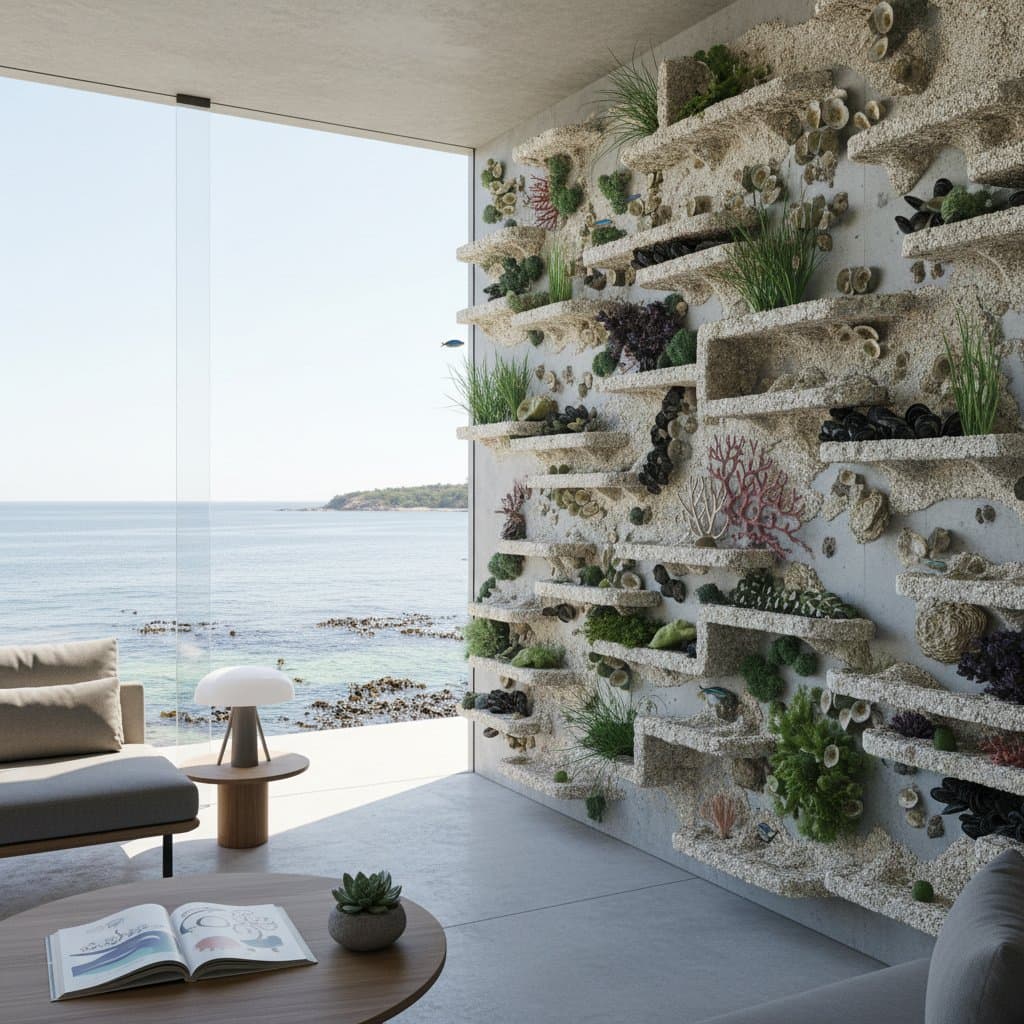Living Seawalls: Integrating Ecology into Coastal Defense
Living seawalls represent a significant advancement in coastal protection strategies. These structures replace traditional concrete barriers with designs that incorporate biological elements to support marine ecosystems. In regions such as San Diego, this approach enhances shoreline stability while promoting biodiversity and long-term environmental health.
What Are Living Seawalls?
A living seawall functions as a hybrid coastal defense that blends engineering with natural features. Unlike smooth concrete surfaces that offer little habitat, these walls include rough textures, recessed pools, and modular units designed to host organisms like oysters, mussels, and algae. This design not only defends against erosion but also creates vibrant intertidal zones.
Core Advantages
Conventional seawalls often exacerbate erosion by reflecting wave energy. Living seawalls, by contrast, dissipate waves through their irregular surfaces and biological growth. They deliver multiple benefits:
- Minimized erosion along adjacent shorelines
- Elevated levels of marine species diversity
- Natural filtration that purifies surrounding waters
- Greater visual appeal and opportunities for public recreation
Living Seawalls Versus Traditional Concrete Structures
| Feature | Traditional Seawall | Living Seawall |
|---|---|---|
| Primary Material | Smooth concrete | Textured panels, stones, or modules |
| Habitat Support | None | Extensive, fostering marine communities |
| Maintenance Needs | Frequent due to structural wear | Infrequent, aided by biological processes |
| Visual Integration | Stark and utilitarian | Blends seamlessly with natural surroundings |
| Expected Durability | 20 to 40 years | Comparable or extended through reinforcement |
Image: A living seawall showcasing textured surfaces colonized by barnacles and seaweed.
Mechanisms of Living Seawalls
These structures emulate the contours of natural rocky shores. Crevices and ledges offer refuge for juvenile fish and invertebrates, while surface roughness encourages algal attachment. As organisms establish, they form a protective biofilm that further buffers against wave impacts.
Essential Design Elements
-
Roughened Surfaces
Varied textures expand available space for species attachment and growth. -
Built-in Refuges
Shallow pools and overhangs replicate tide pools, supporting diverse life stages. -
Sustainable Materials
Options include low-impact concrete and recycled aggregates that avoid toxic leaching. -
Adaptable Modules
Prefabricated sections enable precise fitting to site-specific conditions and simplify upgrades.
Image: Installation of modular panels along a urban coastal path.
Broader Impacts on Ecosystems and Communities
Fostering Biodiversity
Acting as surrogate reefs, living seawalls draw in fish populations, shellfish, and vegetation. These elements bind the structure over time, enhancing its stability against environmental stresses.
Water Purification Processes
Organisms such as bivalves filter suspended particles and nutrients from the water column. A single square meter of such a wall might sustain enough individuals to process thousands of liters daily, yielding measurable improvements in clarity and quality.
Aesthetic and Recreational Enhancements
As biofilms and flora develop, the walls gain color and texture, transforming utilitarian barriers into attractive features. This evolution supports tourism and local enjoyment of waterfront areas.
Adaptation to Climate Challenges
With sea levels rising and storms intensifying, living seawalls offer flexible defenses. Their organic components allow gradual adaptation, combining durability with restorative capacity.
Image: A public park incorporating a living seawall into pedestrian pathways.
Economic Considerations
| Structure Type | Cost per Linear Foot (Installation) | Maintenance Schedule | Overall Value |
|---|---|---|---|
| Concrete Wall | $800 to $1,200 | Regular interventions | Standard economic return |
| Living Seawall | $1,000 to $1,500 | Periodic checks only | Elevated through sustainability |
Initial investments in living seawalls exceed those for concrete, yet savings accrue from lower upkeep and ancillary gains like ecosystem services. These factors often justify the premium for public and private projects alike.
Key Design and Cost Variables
Project specifics shape both form and expense. Awareness of these influences aids in effective planning.
Site-Specific Factors
Exposure to waves, tidal fluctuations, and substrate composition dictate reinforcement levels. Sheltered inlets permit simpler constructions, whereas exposed sites demand robust engineering.
Material Choices
Sourcing regional stones or repurposed materials cuts logistics expenses and ecological footprints.
Regulatory Processes
Environmental reviews favor living seawalls for their restorative qualities, streamlining approvals compared to conventional builds.
Project Scope
Large-scale efforts achieve cost efficiencies, while compact installations for homes carry higher unit prices.
Ongoing Upkeep Strategies
Inspections focus on biological health and minor debris removal, sidestepping extensive reconstructions.
Implementation Steps for Living Seawalls
Initial Evaluation
Teams of engineers and ecologists survey wave dynamics, erosion patterns, and existing wildlife to inform designs.
Tailored Planning
Selections of modules and rocks align with local geology and community preferences for seamless integration.
Build Phase
Units secure to foundations via standard anchoring, augmented by habitat features during assembly.
Post-Installation Oversight
Regular assessments monitor species recruitment and wall performance, allowing for timely adjustments.
Image: An ecologist examining initial colonization on a fresh living seawall.
Involving Local Stakeholders
These projects invite participation from schools and citizen groups in observation efforts. Such involvement builds ecological knowledge and commitment to conservation.
Signage and artistic elements can highlight the walls' roles, enriching public spaces with narratives of environmental progress.
Common Inquiries
| Inquiry | Response |
|---|---|
| Do living seawalls match concrete in protection? | They deliver equivalent defense with added environmental advantages. |
| What is their service life? | Decades, potentially surpassing traditional walls with biological aid. |
| Can they fully substitute concrete? | Hybrids suit high-impact areas; full replacements work in moderate settings. |
| Are they viable for homes? | Scaled designs protect private properties and boost nearby habitats. |
| What upkeep is involved? | Primarily observation and debris management; repairs prove rare. |
| Do they invite problematic species? | They promote natives, which outcompete invasives for equilibrium. |
Advancing Sustainable Shores
Adoption of living seawalls signals a commitment to integrated coastal strategies. In San Diego and beyond, they safeguard assets while nurturing vital ecosystems.
Homeowners and officials benefit from structures that endure, enrich, and engage. This evolution underscores a principle: harmony with nature yields superior outcomes for resilient, thriving coastlines.

